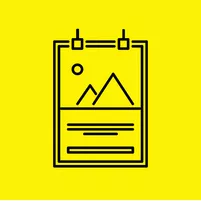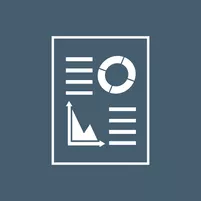African swine fever


African swine fever (ASF) is a viral disease of pigs and wild boar that causes high mortality in the affected animals This virus is harmless to humans, but it causes significant socio-economic disruption in many countries. Areas affected by ASF suffer significant financial losses due to the loss of animals, restrictions on movements of pigs, wild boar and their products, and cost of control measures. The disease can take several years to eradicate. There are neither vaccines nor cures. The typical signs of ASF include fever, abortions, bleeding and sudden death.
Healthy pigs and wild boar usually become infected by:
- Direct contact with infected animals
- Indirect contact through ingestion of products from infected animals, contact with contaminated clothing, vehicles or equipment
- Bites by infectious soft ticks (where present)
Where is it found?
ASF is endemic Consistently present in a population or region, whether dormant or active as measured by clinical tests in sub-Saharan Africa, where the disease was initially discovered. In Europe, ASF was restricted to the Italian island of Sardinia from 1995 until 2007. However, in 2007 ASF outbreaks occurred in Georgia, and the disease spread to the neighbouring countries, affecting domestic pigs and wild boar. In 2014, the first outbreaks were reported in the European Union, affecting wild boar from the Baltic states and Poland. Since then, the disease has spread to other EU countries and neighbouring non-EU countries, and there have been outbreaks in Asia, Oceania and some American countries in recent years.
For more detailed information on the disease characteristics, transmission and worldwide distribution of the pathogen Organism (e.g. bacterium, virus and parasite) that can cause disease, see the ASF disease profile.
Living systematic reviews covering African swine fever
Check out the ASF disease profileLatest
For domestic pigs, 2024 saw the lowest number of African Swine Fever (ASF) outbreaks since 2017, according to the latest epidemiological report published by EFSA. The number of outbreaks in wild boar has remained stable since 2022.
Milestones
2025
May
EFSA publishes its annual epidemiological report on the ASF situation in the EU, continuing to recommend affected Member States to focus their monitoring efforts on passive surveillance The reporting and investigation of increased mortality, other signs of serious disease or significantly reduced production rates with an undetermined cause in a targeted animal population.
2024
November
EFSA publishes a scientific report looking at risk and protective factors for ASF in domestic pigs and wild boar populations, including the role of vectors and the effectiveness of barriers to control wild boar movement. The analysis published today follows the epidemiological update that was released in May 2024.
April
EFSA publishes the outcome of a project aimed at filling a gap regarding the survival of the ASF virus in 14 matrices used for feed and bedding of swine and three different arthropods to clarify their role in ASF transmission. The data available in the report are available online and will help improve future risk assessment A specialised field of applied science that involves reviewing scientific data and studies in order to evaluate risks associated with certain hazards. It involves four steps: hazard identification, hazard characterisation, exposure assessment and risk characterisation of the disease.
2022
July
EFSA started a project for the evaluation of ASF virus survival in feed, bedding material and mechanical vectors, aimed at better understanding the potential role of these aspects in virus transmission to improve future risk assessments.
May
EFSA publishes its annual epidemiological report on the ASF situation in the EU, including an assessment of different strategies for the implementation of a ‘white zone’ for wild boar.
2021
June
EFSA publishes a series of scientific opinions addressing the gaps in the control of ASF and the research priorities regarding transmission by vectors, control of wild boar and seasonality. Experts assess the role of outdoor pig farming systems in the EU on the introduction and spread of ASF, and propose biosecurity and control measures.
March
EFSA publishes surveillance recommendations for providing evidence of ASF absence in wild boar populations, also called ‘exit strategy’.
2020
August
EFSA launches a major campaign to raise awareness of and help halt the spread of ASF.
January
EFSA publishes its annual report on African swine fever in the EU, showing that the affected area of the EU expands progressively, moving mainly in a south-western direction. In the meantime, Czechia becomes officially free of the disease.
2019
November
EFSA publishes a risk assessment of African swine fever in south-eastern Europe evaluating the possibility of its spread in neighbouring countries.
2018
July
EFSA identifies strategies for managing wild boar at different stages of an epidemic of ASF: what should be done before, during and after.
2017
March
The first annual epidemiological analysis by EFSA and Member States concludes that ASF is spreading slowly in the Baltic countries and Poland.
2014
April
EFSA concludes that the risk of ASF becoming endemic in Georgia, Armenia and Russia increased from moderate to high.
Communication Toolkit
This toolkit comprises infographics, posters and ready-to-use social media posts organised by audience (farmers, hunters and veterinarians). this communication material can be used to help inform on signs of ASF, safety measures to adopt and who to contact in suspected cases.

Posters
Check out our posters about ASF signs and prevention
Social media post
Discover visuals and captions for social media use
Stickers
Print our stickers about ASF signs and prevention
Infographics
Check out our infographics about ASF signs and prevention
Posters
Check out our posters about ASF signs and prevention
Social media posts
Discover visuals and captions for social media use
Stickers
Print our stickers about ASF signs and prevention
Posters
Check out our posters about ASF signs and prevention
Social media posts
Discover visuals and captions for social media use
Stickers
Print our stickers about ASF signs and preventionStop African swine fever video

EFSA's role
EFSA provides independent scientific advice to assist risk managers (the European Commission, European Parliament and Member States) in making appropriate decisions and actions.
EFSA and its experts have provided scientific advice on African swine fever numerous times over the past years by assessing the risk of introduction and different control strategies, looking at the role of vectors and outdoor pig farms, and providing surveillance recommendations for the absence of disease in wild boar populations, among others.
EFSA has a mandate to provide annual epidemiological updates on the evolution of African swine fever in the EU and to review the risk factors involved in the maintenance and spread of the disease. For those reports, EFSA collects data from Member States, supporting them in the standardisation and submission of the data.
The European Union has drawn up specific prevention and control measures to be applied where African swine fever is suspected or confirmed either in holdings or in wild boar.